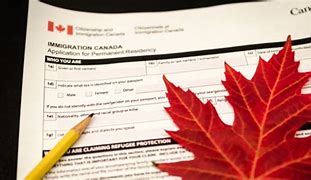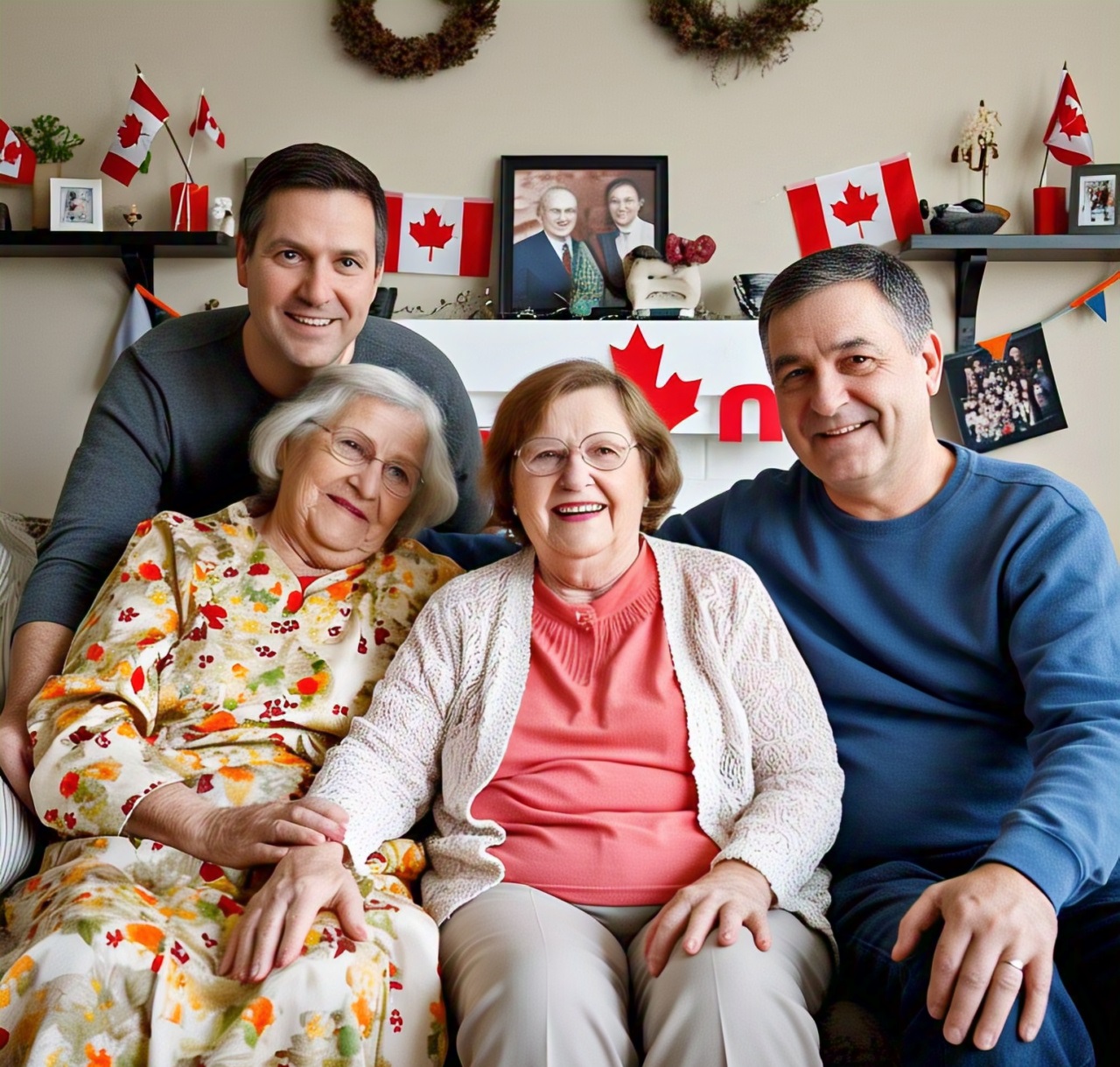When an immigration application faces refusal, whether for a work permit, study permit, or permanent residency, it can be a frustrating experience. However, if you believe an error was made in the assessment, a reconsideration request offers a direct avenue to address the decision with the immigration authorities. Essentially, a reconsideration request involves formally communicating to Immigration, Refugees, and Citizenship Canada (IRCC) why you believe the initial refusal was incorrect. This argument often centers on overlooked information or a perceived misapplication of regulations by the assessing officer. If you are confident that the decision would have been different had a specific piece of evidence been considered or an error rectified, pursuing reconsideration can be a worthwhile step. When Might Reconsideration Be the Right Approach? Consider a reconsideration request when you suspect a mistake in the evaluation of your application. This could arise in various scenarios, such as: In such instances, a reconsideration request provides an opportunity to present your case again with a focus on the perceived error. Crafting a Persuasive Reconsideration Request To maximize the effectiveness of your request, understanding the reasons behind the refusal is paramount. The refusal letter often provides a general explanation. To gain deeper insight, obtaining the officer’s notes is highly recommended. These notes detail the specific reasoning behind the decision and can be requested from IRCC. Once you have these notes, you can carefully analyze the rationale for the refusal. This analysis will help you determine if a genuine error occurred and if a reconsideration request is the most appropriate course of action. Your reconsideration request should then clearly and concisely articulate the identified error and provide any supporting documentation or arguments to demonstrate why the original decision should be reviewed. Advantages of Pursuing Reconsideration One significant advantage of a reconsideration request lies in its relative simplicity compared to a formal appeal. An appeal typically involves a judicial review process, which can be lengthy, complex, and costly, often requiring legal representation and court proceedings. In contrast, a reconsideration request is a direct communication with IRCC, focusing on presenting factual arguments and highlighting potential oversights. This makes it a potentially faster and less expensive way to address a refused application. Important Considerations While reconsideration offers a more streamlined approach than an appeal, it’s crucial to understand that its success is not guaranteed. IRCC may review your request and ultimately uphold their original decision. In such cases, the refusal stands. In conclusion, a reconsideration request provides a valuable opportunity to challenge a potentially incorrect refusal decision. By carefully analyzing the reasons for refusal and presenting a well-articulated argument supported by evidence, you can request IRCC to take another look at your application. While not a guaranteed solution, it offers a direct and often more efficient pathway to address perceived errors before considering more complex avenues like appeals. Let Worldbridge Immigration Services be your guide to a successful future in Canada Contact us: Website: www.theworldbridge.ca Email: info@theworldbridge.ca Phone/WhatsApp: +1-416-727-7766 Social Media: @worldbridgeHQ
How to Effectively Respond to a Procedural Fairness Letter in Canadian Immigration
Receiving a Procedural Fairness Letter (PFL) from Canadian immigration authorities can be alarming, but it’s not the end of the road. This critical document gives you an opportunity to address concerns before a final decision is made. Understanding how to respond effectively can mean the difference between approval and refusal. What Is a Procedural Fairness Letter? A PFL is a formal notice from Immigration, Refugees and Citizenship Canada (IRCC) or the Canada Border Services Agency (CBSA) indicating that they have concerns about your application. Before refusing or rejecting it, they must give you a fair chance to respond—this is a fundamental principle of procedural fairness in Canadian law. Why Did You Receive a PFL? Common reasons for a PFL include: 1. Concerns About Relationship Genuineness (Spousal/Common-Law Sponsorships) – If IRCC suspects a marriage or partnership is not authentic (e.g., short relationship history, lack of cohabitation evidence). – How to Respond: Provide additional proof such as: 2. Suspected Misrepresentation (False or Incomplete Information) – If IRCC believes you provided incorrect or misleading details (even unintentionally). – How to Respond: 3. Medical Inadmissibility Concerns – If a medical exam suggests your condition could place excessive demand on Canada’s healthcare system. – How to Respond: 4. Criminal or Security Issues – Past criminal records or security risks may trigger a PFL. – How to Respond: Steps to Crafting a Strong Response 1. Read the PFL Carefully 2. Gather Strong Supporting Evidence 3. Write a Clear, Organized Reply 4. Consult an Immigration Lawyer (If Possible) What Happens If You Don’t Respond? Final Thoughts A Procedural Fairness Letter is a second chance, not a rejection. By responding thoroughly, accurately, and on time, you can resolve concerns and keep your immigration journey on track Let Worldbridge Immigration Services be your guide to a successful future in Canada Contact us: Website: www.theworldbridge.ca Email: info@theworldbridge.ca Phone/WhatsApp: +1-416-727-7766 Social Media: @worldbridgeHQ
A Compassionate Pathway to Canadian Permanent Residency: Understanding Humanitarian & Compassionate (H&C) Applications
For many individuals living in Canada, the dream of obtaining permanent residency can feel out of reach—especially if they don’t qualify under standard immigration programs. Fortunately, Canada’s immigration system recognizes that some cases demand flexibility and humanity. This is where a Humanitarian and Compassionate (H&C) application comes into play. What Is an H&C Application? An H&C application is a unique avenue for individuals to seek permanent residency based on compelling personal circumstances rather than standard eligibility criteria. Unlike economic or family sponsorship programs, H&C applications are assessed on humanitarian grounds, focusing on fairness, hardship, and the applicant’s ties to Canada. Important Note: H&C applications are strictly for permanent residency—they do not apply to temporary visas, work permits, or study permits. While humanitarian arguments can sometimes support temporary applications, they are not the same as a formal H&C case. Who Should Consider an H&C Application? Not everyone can apply—only those with strong, well-documented reasons demonstrating that returning to their home country would cause undue hardship. Some common grounds include: 1. Deep Roots in Canada (Establishment) If an applicant has spent years building a life in Canada, they may argue that uprooting themselves would be unjust. Factors that strengthen this claim include: The more integrated the applicant is, the stronger the case. 2. The Best Interests of a Child Canada places significant weight on the well-being of children. If an applicant has a child who is thriving in Canada—whether as a citizen, permanent resident, or even undocumented—removing them could have severe emotional, educational, or social consequences. Evidence may include: Even if the child is not Canadian, their stability in Canada can be a decisive factor. 3. Family and Community Ties Strong connections to Canadian family members (such as siblings, parents, or extended family) or deep community bonds can support an H&C case. Separation from these ties—especially if no close family remains in the home country—can be a compelling argument. 4. Risk of Hardship Abroad If returning to the home country would expose the applicant (or their dependents) to danger, discrimination, or extreme hardship, this can be central to the case. Examples include: Key to Success: Strong Evidence & Persuasive Arguments Since H&C applications are discretionary (meaning officers evaluate each case individually), the quality of the submission is crucial. Applicants must provide: Vague claims won’t suffice—every argument must be backed by credible, verifiable proof. A Last Resort, But a Vital One H&C applications are often seen as a final option—when no other immigration pathway exists. While approval is never guaranteed, a well-prepared case can make all the difference. Final Thoughts Canada’s H&C provision reflects the country’s commitment to fairness and compassion. For those with deep ties to Canada or facing severe hardship abroad, it offers a crucial lifeline. However, success depends on meticulous preparation, strong evidence, and a compelling narrative. If you believe you qualify, consulting an experienced immigration lawyer or consultant like our immigration agency can significantly improve your chances. Every case is unique—and with the right approach, permanent residency may still be within reach. Let Worldbridge Immigration Services be your guide to a successful future in Canada Contact us: Website: www.theworldbridge.ca Email: info@theworldbridge.ca Phone/WhatsApp: +1-416-727-7766 Social Media: @worldbridgeHQ
Navigating the Intra-Company Transfer (ICT) Work Permit in Canada
What is the ICT Work Permit? The Intra-Company Transfer (ICT) program allows multinational businesses to temporarily transfer qualified employees to their Canadian operations. This work permit is designed for companies with a presence in multiple countries, facilitating seamless employee mobility. Key Requirements for ICT Eligibility To qualify for the ICT program, a company must: 1. Operate in at least three countries, including Canada. 2. Have a legally recognized business structure in each country (e.g., parent company, branch, subsidiary, or affiliate). 3. Demonstrate a qualifying legal relationship between the foreign and Canadian entities. What Defines a Legal Relationship? A valid legal relationship is based on ownership and control, meaning: Common Business Structures That Qualify What Doesn’t Qualify? Why Proper Documentation Matters Immigration officers scrutinize the legal and operational ties between companies. Without proof of ownership and control, an ICT work permit application may be denied. Final Thoughts Successfully transferring employees under the ICT program requires careful planning and proper legal structuring. If your company meets the criteria, this pathway offers a streamlined process for bringing key talent to Canada. Need help with your ICT work permit application? Contact our immigration experts for a smooth and successful process! Let Worldbridge Immigration Services be your guide to a successful future in Canada Contact us: Website: www.theworldbridge.ca Email: info@theworldbridge.ca Phone/WhatsApp: +1-416-727-7766 Social Media: @worldbridgeHQ
Understanding Canadian Visas vs. Status Documents
Navigating Canadian immigration requirements can be complex, particularly when distinguishing between visas and status documents. Many individuals confuse a Canadian Temporary Resident Visa (TRV) with permits such as a work permit, study permit, or visitor record. However, these serve distinct purposes, and understanding the differences is crucial for lawful entry and stay in Canada. Key Differences Between a Visa and a Status Document 1. Canadian Temporary Resident Visa (TRV) A TRV is an official document placed in a traveler’s passport, permitting them to travel to Canada—not to remain in the country. It is required for nationals of visa-required countries, whereas citizens of visa-exempt countries (such as the U.S. and most European nations) do not need one. A TRV only facilitates entry into Canada. It does not grant legal status for residing, working, or studying. 2. Temporary Resident Status Documents Upon arrival in Canada, foreign nationals must obtain an official status document to legally remain in the country. The type of document depends on the purpose of the visit: How Status Documents Are Issued Why the Distinction Matters Conclusion Understanding the difference between a Canadian visa (or eTA) and a status document is essential for compliance with immigration rules. While the visa facilitates entry, the permit or record governs legal stay. Whether you are a student, worker, or visitor, ensuring you have the correct documentation will help avoid complications during your time in Canada. For professional legal assistance with Canadian immigration matters, stay updated on our website or reach out to us via our social media Let Worldbridge Immigration Services be your guide to a successful future in Canada Contact us: Website: www.theworldbridge.ca Email: info@theworldbridge.ca Phone/WhatsApp: +1-416-727-7766 Social Media: @worldbridgeHQ
Major Changes to Canada Immigration: LMIA Suspension and Alberta PNP Updates for 2025
Canada’s immigration landscape is undergoing significant transformations in 2025, with key updates affecting the Labour Market Impact Assessment (LMIA) process and Alberta’s Provincial Nominee Program (PNP). These changes will impact employers, foreign workers, and prospective permanent residents. Below is a detailed breakdown of the latest developments and their implications. 1. Temporary Suspension of Low-Wage LMIA Processing Effective April 4, 2025, Canada has temporarily halted the processing of low-wage LMIA applications in regions where the unemployment rate exceeds 6%. This suspension will remain in place until July 10, 2025, and currently affects 24 regions, primarily in Ontario and British Columbia. Key Points: 2. Alberta Advantage Immigration Program (AAIP) Updates Alberta’s PNP has introduced several critical changes that applicants must consider when planning their immigration pathway. A. Acceptance of PTE Core for English Proficiency Starting April 1, 2025, Alberta’s PNP will now accept the Pearson Test of English (PTE) Core alongside IELTS General Training as proof of language proficiency. This change provides applicants with greater flexibility in choosing their preferred English language test. B. Significant Increase in Application Fees The AAIP has substantially raised processing fees across all streams. As of April 1, 2025, the application fee has increased from $840 CAD to $1,500 CAD. This adjustment affects all major streams, including: Prospective applicants should factor in these higher costs when budgeting for their immigration process. C. Removal of Priority Processing for Family and Occupation Categories Previously, Alberta’s PNP prioritized applicants with: However, as of March 17, 2025, this priority processing has been discontinued. While applicants can still claim points for having relatives in Alberta, their applications will no longer receive expedited treatment. This change aims to create a more level playing field for all candidates. 3. What Do These Changes Mean for Applicants? Canada’s immigration policies are increasingly aligning with economic conditions, prioritizing regions with labor shortages while tightening processes in high-unemployment areas. For prospective immigrants, this means: Conclusion The 2025 immigration updates reflect Canada’s efforts to balance labor market needs with economic realities. Whether you are an employer relying on LMIA-based hires or an applicant seeking Alberta provincial nomination, understanding these changes is crucial for a successful immigration journey. Stay updated for official government announcements and consult our immigration professionals to navigate these evolving policies effectively. Let Worldbridge Immigration Services be your guide to a successful future in Canada Contact us: Website: www.theworldbridge.ca Email: info@theworldbridge.ca Phone/WhatsApp: +1-416-727-7766 Social Media: @worldbridgeHQ
Understanding Humanitarian and Compassionate (H&C) Applications for Canadian Permanent Residency
For individuals who do not qualify for Canadian permanent residency through standard immigration pathways, a Humanitarian and Compassionate (H&C) application may provide an alternative solution. This discretionary process allows applicants to request permanent residency based on compelling personal circumstances that warrant special consideration. Unlike temporary residency applications—such as work permits or study permits—H&C applications are exclusively for permanent residency. While humanitarian arguments may sometimes support temporary visa requests, they do not constitute an official H&C application. Instead, H&C applications are designed for those who face significant hardships if required to leave Canada and meet specific legal criteria. Key Aspects of H&C Applications Discretionary Nature H&C applications are assessed on a case-by-case basis, with immigration officers exercising significant discretion in their decisions. There are no guarantees of approval, as outcomes depend on the strength and credibility of the applicant’s arguments. Established Legal Grounds To succeed, applicants must demonstrate that their situation aligns with recognized H&C grounds, including: 1. Establishment in Canada -Long-term residence (typically two or more years) strengthens an applicant’s case. -Evidence may include employment history, education in Canada, property ownership or leases, community involvement, volunteer work, and social ties (e.g., religious or cultural participation). -The argument centers on the difficulty of uprooting the applicant’s life if forced to return to their home country. 2. Best Interests of the Child – If the applicant has children in Canada, the officer must consider how relocation would affect them. – Factors include the child’s education, social connections, and emotional well-being. – This argument is particularly compelling if the child is a Canadian citizen, as removing them from their country of citizenship could be deemed unreasonable. 3. Family Ties in Canada – Close relationships with Canadian citizens or permanent residents (e.g., spouses, parents, siblings, or extended family) may support the application. – Strong family connections demonstrate deeper roots in the country. 4. Hardship Upon Return – Applicants should outline the challenges they or their dependents would face if required to leave Canada. – This may include economic instability, lack of healthcare, or unsafe conditions in their home country. Supporting Documentation Important Considerations Conclusion Humanitarian and Compassionate applications offer a vital opportunity for individuals facing exceptional circumstances to secure permanent residency in Canada. By presenting a well-documented, persuasive case aligned with established legal grounds, applicants can appeal to the discretion of immigration officers. While outcomes are uncertain, thorough preparation and credible evidence are essential for maximizing the likelihood of approval. For further guidance on H&C applications or other immigration matters, consulting a qualified legal professional like us is highly recommended. Let Worldbridge Immigration Services be your guide to a successful future in Canada Contact us: Website: www.theworldbridge.ca Email: info@theworldbridge.ca Phone/WhatsApp: +1-416-727-7766 Social Media: @worldbridgeHQ
Express Entry’s New Era: Impact of Job Offer Points Removal
Key Data Reveals Shifts in Canada’s Immigration Pool Recent data obtained through an Access to Information and Privacy (ATIP) request by Burku Akayol, a Regulated Canadian Immigration Consultant (RCIC), provides critical insights into the Express Entry pool following the removal of job offer points. This change, implemented by Immigration, Refugees and Citizenship Canada (IRCC) on March 25, 2024, marks a significant shift in Canada’s immigration system. Pool Breakdown as of March 16, 2024 The data reveals the composition of the Express Entry pool just before the removal of job offer points: Notably, a subsequent Provincial Nominee Program (PNP) draw on March 21 invited 379 candidates, reducing the high-score pool. However, the focus remains on the 501-600 range, where a substantial number of applicants were affected by the policy change. Job Offer Points: A Closer Look The ATIP data highlights the distribution of candidates with arranged employment points: Top Countries with Job Offer Points The majority of candidates claiming job offer points were from the following countries: 1. India: 23,280 (62.6% of total) 2. Philippines: 3,340 (9%) 3. China: 1,445 4. Mexico: 670 5. South Korea: 635 These five nations accounted for nearly 79% of all job offer claims. Program-Specific Breakdown Federal Skilled Worker Program (FSWP): Canadian Experience Class (CEC): Federal Skilled Trades Program (FSTP): Implications of the Policy Change The removal of job offer points is expected to significantly alter the Express Entry landscape: 1. Pool Reduction: Approximately 35% of candidates in the 501-600 range (around 9,000 individuals) may lose points, leaving roughly 17,500 candidates competing in this bracket. 2. Future Draw Projections: If IRCC conducts a large draw (4,000-5,000 invitations), the Comprehensive Ranking System (CRS) cutoff could drop to 515 initially, with further declines anticipated. 3. Opportunity for CEC Candidates: Many Canadian Experience Class applicants without foreign work experience but with strong language scores and Canadian education may now see improved chances. Addressing Misconceptions – Not All Job Offers Involve LMIA: Many candidates qualify through intra-company transfers, C20 work permits, or international agreements (e.g., NAFTA). – Fraud Concerns: While misuse of Labor Market Impact Assessments (LMIAs) has occurred, legitimate pathways exist for skilled workers. – No Targeted Restrictions: The policy change affects all nationalities, not just Indian applicants, despite their higher representation in the data. What’s Next? IRCC is currently updating profiles to remove job offer points, which may delay the next Express Entry draw. Once completed, candidates can expect: – Lower CRS Cutoffs: As the pool adjusts, scores are likely to decline, benefiting those without arranged employment. – Focus on CEC Draws: With no Canadian Experience Class draws since January, IRCC may prioritize this category soon. Conclusion The elimination of job offer points marks a pivotal moment for Express Entry, leveling the playing field for candidates relying solely on their skills, education, and language proficiency. While the transition may cause short-term fluctuations, the long-term impact promises greater fairness and accessibility in Canada’s immigration system. For ongoing updates, follow official IRCC announcements and trusted immigration consultants. Source: ATIP data obtained by Burku Akayol, RCIC. Analysis based on IRCC’s March 16, 2024, Express Entry pool statistics. Let Worldbridge Immigration Services be your guide to a successful future in Canada Contact us: Website: www.theworldbridge.ca Email: info@theworldbridge.ca Phone/WhatsApp: +1-416-727-7766 Social Media: @worldbridgeHQ
Canada Expands Parents and Grandparents Program in Major Immigration Update
In a significant move to strengthen family reunification, the Canadian government has announced key updates to its Parents and Grandparents Program (PGP), including an increased intake cap and new opportunities for past applicants. Additionally, the **Super Visa Program** remains a flexible option for extended family visits. These changes reflect Canada’s ongoing commitment to keeping families together and supporting its immigrant population. Increased Application Cap for PGP For 2025, Canada has raised its PGP application acceptance target to 25,000, a substantial increase from the previously planned 15,000. This adjustment accommodates submissions from both the 2024 and 2025 intake cycles, addressing the overwhelming demand for family sponsorship. The decision marks a reversal of earlier restrictions, reinforcing Canada’s dedication to facilitating permanent residency for parents and grandparents of Canadian citizens and permanent residents. Second Chance for Previous Applicants Recognizing the backlog of hopeful sponsors, Immigration, Refugees and Citizenship Canada (IRCC) is reopening opportunities for applicants who submitted **Interest to Sponsor forms in 2020** but were not selected. This initiative provides a renewed chance for families to reunite, offering relief to those who have waited years for an opportunity. Super Visa: A Flexible Alternative For families not selected under the PGP, the Super Visa Program remains an attractive option. This visa allows parents and grandparents to visit Canada for up to five years per entry, with a 10-year validity period. Unlike the PGP, the Super Visa does not grant permanent residency but enables extended stays, making it an ideal solution for temporary reunification. A Proactive Approach to Family Immigration These updates highlight Canada’s progressive stance on immigration, prioritizing family unity while adapting to applicant needs. By expanding the PGP and maintaining accessible Super Visa options, Canada continues to solidify its reputation as a leading destination for immigrant families. For those considering sponsorship, staying informed on eligibility criteria and application strategies is crucial. Prospective applicants should monitor IRCC announcements for the latest updates and deadlines. What are your thoughts on these changes? Share your perspective in the comments below. For more insights on Canadian immigration . Let Worldbridge Immigration Services be your guide to a successful future in Canada Contact us: Website: www.theworldbridge.ca Email: info@theworldbridge.ca Phone/WhatsApp: +1-416-727-7766 Social Media: @worldbridgeHQ
Think Twice Before Changing Your NOC Code: Key IRCC Updates for Canada Immigration
Canada’s immigration system is constantly evolving, and recent changes to Express Entry categories—such as the inclusion of cooks and trades occupations—have led many applicants to reconsider their National Occupational Classification (NOC) codes. However, altering your NOC code without proper justification can have serious consequences, including a potential five-year ban for misrepresentation. Why Changing Your NOC Code Can Be Risky 1. IRCC Tracks Your Application History Immigration, Refugees and Citizenship Canada (IRCC) maintains a digital record of all your past applications, including: If you change your NOC code in a new application, IRCC may cross-reference it with past submissions. Discrepancies in job titles, duties, or NOC codes can trigger a Procedural Fairness Letter (PFL), requiring you to justify the change. Failure to provide a valid explanation could result in a refusal or even a five-year ban for misrepresentation. 2. Provincial Nominee Programs (PNPs) Also Scrutinize NOC Codes Provincial programs like the Saskatchewan Immigrant Nominee Program (SINP) and the Ontario Immigrant Nominee Program (OINP) cross-check your Express Entry profile and past applications. In one case, an applicant who claimed to be an HR manager in their PNP application—but had previously listed a different NOC code in Express Entry—was issued a five-year ban for misrepresentation. 3. Not All NOC Code Changes Are Equal – Minor Adjustments (Same NOC, Different Job Title): If your job duties remain consistent with the NOC code, updating your title (e.g., from “Chef” to “Cook”) may be acceptable. – Major Changes (Switching to a Different NOC): If you switch to an entirely different occupation (e.g., from “Restaurant Manager” to “Cook”), IRCC may question whether you are attempting to “game” the system. Key Considerations Before Updating Your NOC Code 1. Do Your Job Duties Match the New NOC? Your NOC selection must align with your actual job responsibilities. For example: If your employment letter does not support the new NOC, your application could be refused. 2. Do You Meet the Employment Requirements? Some NOC codes have specific education or licensing requirements. For example: If you lack the necessary qualifications, IRCC may reject your application. 3. Was the Change Justified? If you made an honest mistake (e.g., selecting the wrong NOC initially), you may be able to correct it—but you must provide a reasonable explanation. However, if IRCC suspects you are manipulating the system to qualify for a specific draw, you risk severe penalties. Final Advice: Proceed with Caution Before updating your NOC code: ✔ Review your past applications to ensure consistency. ✔ Verify that your job duties match the new NOC. ✔ Check if you meet employment requirements (education, licensing, etc.). ✔ Consult a licensed immigration professional if unsure. Misrepresentation can derail your Canadian immigration journey. Always ensure your application reflects accurate and verifiable information. — Need personalized advice? If you’re unsure about your NOC code or eligibility, consider consulting a Regulated Canadian Immigration Consultant (RCIC) or lawyer before making changes. Stay informed, stay compliant, and make the right choices for your Canadian immigration future. 🇨🇦 Let Worldbridge Immigration Services be your guide to a successful future in Canada Contact us: Website: www.theworldbridge.ca Email: info@theworldbridge.ca Phone/WhatsApp: +1-416-727-7766 Social Media: @worldbridgeHQ










